CastlesandfortsinEurope - Architecture

Removed from Unnamed collection
Castel Sant Angelo 
Known as Hadrian's Tomb, the Castel Sant'Angelo is a fortress located on the right bank of the Tiber, a short distance from the Vatican City.
Construction of the building began in the year 135 under the direction of the Emperor Hadrian, who intended to use it as mausoleum for himself and his family. It was finished in the year 139 and a short time later, it became a military building, which in the year 403 would be integrated to the Aurelian Walls.
The Castel Sant'Angelo is split into five floors which can be reached by a spiral ramp that first reaches the chamber of ashes and subsequently the cells in which a number of historical figures were incarcerated.
Advancing toward the upper part of the castle you will find different rooms that functioned as a Papal residence, decorated with perfectly preserved frescoes from the Renaissance period, besides the extensive collection of weapons.
In the upper floor there is a large terrace where you can take amazing photographs of the city from above. Advancing toward the upper part of the castle you will find different rooms that functioned as a Papal residence, decorated with perfectly preserved frescoes from the Renaissance period, besides the extensive collection of weapons. In the upper floor there is a large terrace where you can take amazing photographs of the city from above. https://www.rome.net/castel-sant-angelo
Map

Removed from Unnamed collection
Sforza Castle 
Castello Sforzesco is a surprising monument sheltering several specialized museums and traces of the city’s past. An oasis of art and culture. It was originally a Visconti fortress and later home to the mighty Sforzas, the rulers of Milan, who transformed it into a magnificent ducal palace thought to have been decorated by several of the greatest artists of the times including Donato Bramante and Leonardo da Vinci.
Transformed into a military complex during four centuries of foreign occupation and subsequently used as the barracks of the Italian army, at the end of the 19th century the Castle was restored by architect Luca Beltrami who turned it into the headquarters of Milan’s Civic Museums.
Today the Castle sits in all of its glory in the eponymous square with its 70m-tall “Torre del Filarete” and a number of majestic circular keep-towers. https://www.wheremilan.com/sightseeing-sempione/sforza-castle/
Map
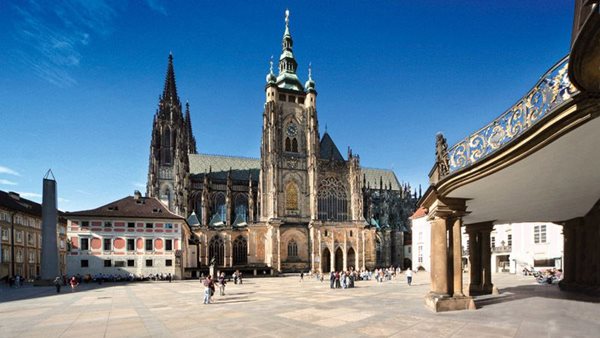
Removed from Unnamed collection
Prague Castle 
Which is the largest castle in the world? The one in Prague of course! You can wander around its courtyards, palaces, museums and garden all day long and whilst doing so, admire the overwhelming beauty of a place which has been the seat of Czech kings, emperors and presidents for a thousand years. The whole castle grounds are dominated by the monumental St. Vitus Cathedral, which is one of the most beautiful in Europe. Discover the secret of this symbol of the Czech Republic and a place which makes Prague one of the most beautiful cities in the world. http://www.czechtourism.com/c/prague-castle/
Map

Removed from Unnamed collection
Rosenborg Castle 
A royal hermitage set in the King’s Garden in the heart of Copenhagen, Rosenborg Castle features 400 years of splendor, royal art treasures and the Crown Jewels and Royal Regalia.
Rosenborg Castle was built by one of the most famous Scandinavian kings, Christian IV, in the early 17th century.
Among the main attractions is the Knights’ Hall with the coronation thrones and three life-size silver lions standing guard. Tapestries on the walls commemorate battles between Denmark and Sweden.
The interiors are well-preserved and invite you to take a journey in time. You can experience the king’s private writing cabinet, his bathroom, and see wax figures of former royal inhabitants.
Rosenborg also houses an exquisite collection of Flora Danica and one of the world’s finest Venetian glass collections, both set in tower chambers. https://www.visitcopenhagen.com/copenhagen/rosenborg-castle-gdk410582
Map

Removed from Unnamed collection
Malahide Castle 
Malahide Castle, set on 250 acres of park land in the pretty seaside town of Malahide,w as both a fortress and a private home for nearly 800 years and is an interesting mix of architectural styles.
The Talbot family lived here from 1185 to 1973, when the last Talbot died. The house is furnished with beautiful period furniture together with an extensive collection of Irish portrait paintings, mainly from the National Gallery. The history of the Talbot family is recorded in the Great Hall, where portraits of generations of the family tell their own story of Ireland's stormy history. Many additions and alterations have been made to this romantic and beautiful structure, but the contours of the surrounding parklands have changed little in 800 years, retaining a sense of the past.
A major feature of Malahide Castle Demesne is the beautiful Talbot Botanic Gardens. The gardens, as they exist today, were largely created by Lord Milo Talbot between 1948 and 1973. https://www.visitdublin.com/see-do/details/malahide-castle-and-gardens
Map
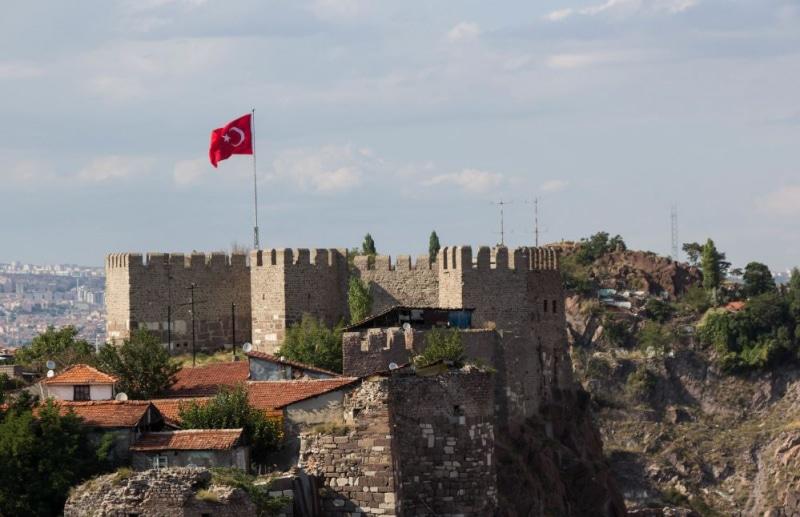
Removed from Unnamed collection
Ankara Castle 
Its construction date is not known exactly. It is believed to have been built by the Hittites, who had a military garrison in the city. But this idea has not been confirmed based on archaeological data. The Ankara Castle, which has been in the same place since the Hittites, was repaired many times during the Romans, Byzantines and Seljuk periods, consists of the inner castle that covers the high part of the hill and the outer castle that surrounds its surroundings (the outer castle has about 20 towers). The outer fortress turns the old city of Ankara.
The castle has experienced various periods in history. BC 2nd century After the Romans invaded Galatya (Ankara region) at the beginning, the city grew and fell out of the castle. Roman Emperor Caracaila İ.S. In 217 he repaired the walls of the castle. Between 222 and 260, Emperor Severus Alexander and Velerianus were defeated by the Persians and the castle was partially destroyed. After the second half of the 7th century, the Romans began to repair the castle. Emperor Constantine made an outsider in 688. IV. While Leon repaired the castle walls in 740, the walls of the inner castle also increased. Emperor Nikephoros and Emperor Basileios also repaired the fort in the 9th century. http://www.ankarakalesi.com/index.php?option=com_content&view=article&id=16&Itemid=4
Map
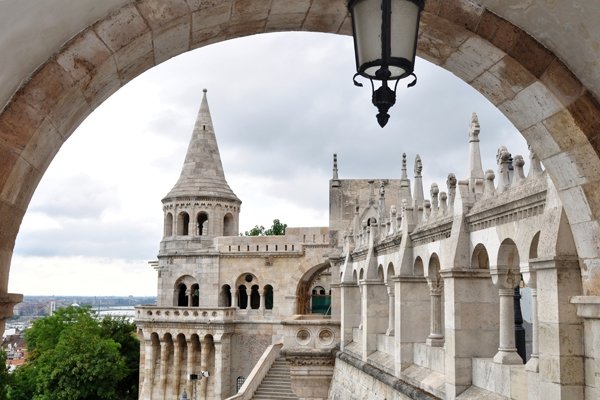
Removed from Unnamed collection
Fisherman s Bastion 
The main façade of the Fisherman’s Bastion, running parallel to the Danube, is approximately 140 metres long. The seven stone towers with their pointed tops symbolise the leaders of the Hungarian tribes who conquered the country in 896. It was built in place of the old fortification walls in neo-Romanesque style between 1895 and 1902 on the plans of Frigyes Schulek, who was also in charge of the reconstruction of the Mathias Church. The Bastion takes its name from the guild of fishermen that was responsible for defending this stretch of the city walls in the Middle Ages. https://www.budapest.com/city_guide/sights/monuments_of_art/fishermens_bastion.en.html
Map

Removed from Unnamed collection
Buda Castle 
Royal Palace – Buda Castle is the historical castle and palace complex of the Hungarian kings in Budapest and was first completed in 1265. The first, Gothic style royal palace was built during the reign of Louis the Great, King Sigismund and King Matthias (from the middle of the 14th century until the end of the 15th). It became a royal residence of European rank, with its Gothic and Renaissance elements. Buda was occupied by the Turks in 1541, and it was only retaken during the Christian siege of Buda in 1686.
In WWII, the palace and the Castle District were the last refuges of the Germany Army, which fell under heavy siege from the invading Soviet Army. The palace was again damaged; reconstruction started in the 1950-s. Leading architects of the age have announced that they wanted to return to the 18th-century Baroque form of the palace, and at the same time keep its 19th-century dimensions. They constructed a Baroque façade that never existed before. This was because 20th-century architects saw no value in an eclectic style, although this is now considered to be the most valuable aspect of Budapest’s buildings. https://bookinbudapest.com/royal-palace-buda-castle
Map
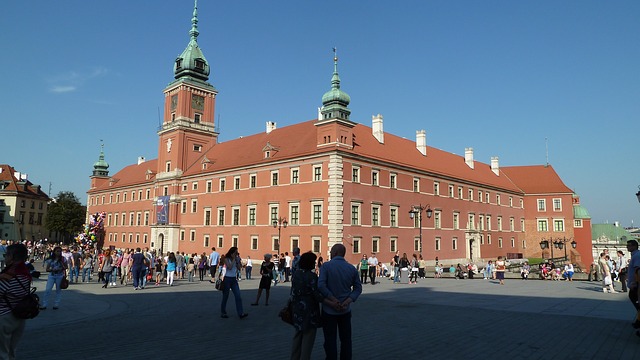
Removed from Unnamed collection
Warsaw Royal Castle 
Former residence of Mazovian princes. Once the capital was moved to Warsaw from Krakow, the castle served as seat of the king and the government. Completely destroyed during World War II.
Built in the 15th century, this castle served as residence of Mazovian princes. Once the capital was moved to Warsaw from Krakow, the castle served as seat of the king and the government. The castle has been renovated repeatedly and destroyed completely during World War II. It was rebuilt between 1971-1988 using castle remains and rubble. Today, the segment with the clock tower opens the way to the Old Town. Museum attractions include two original Rembrandt paintings as well as works by Bernard Bellotto, aka Canaletto, court painter to Polish King Stanisław August Poniatowski. Canaletto's paintings were vital during Warsaw's post-war reconstruction. https://www.poland.travel/en/discover/castles-palaces/royal-castle-in-warsaw
Map

Removed from Unnamed collection
Castle Bromwich Hall Gardens 
These 10 acre walled gardens (listed Grade II) are a rare example of formal English garden design.
They are being restored as near as possible to the period 1680 to 1762 when the Bridgeman family moved to Weston Park. The house was built in 1599 by Sir Edward Devereux and extended by Sir John Bridgeman I about 100 years later.
The Gardens were developed by several generations of the Bridgeman Family (later to become the Earls of Bradford) reaching peaks of excellence around 1760 and 1900. The Gardens fell into decline during the middle part of the twentieth century until they were rescued by the Trust in 1985.
The Holly Maze is a distorted mirror image of the one at Hampton Court Palace designed by George London and Henry Wise. https://www.castlebromwichhallgardens.org.uk/
Map
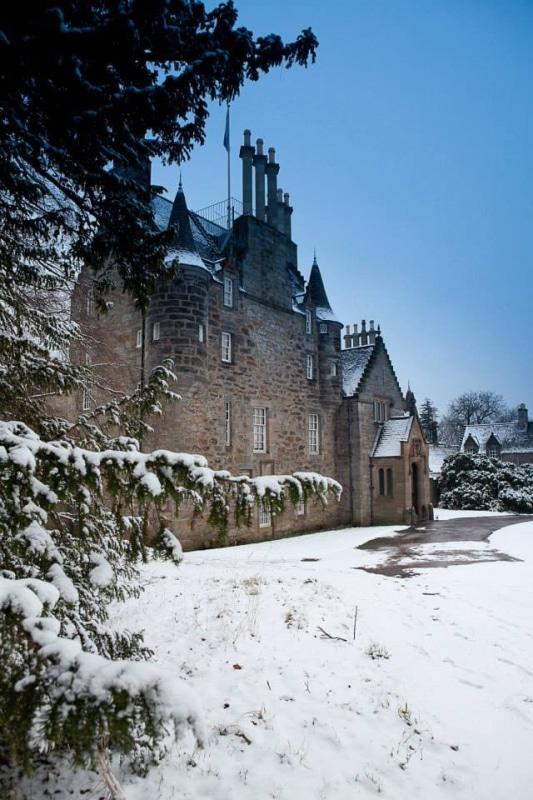
Removed from Unnamed collection
Lauriston Castle 
With its calm, tranquil atmosphere, and stunning views across the Firth of Forth, Lauriston is the perfect place to escape from the bustle of the city centre.
Enjoy a woodland walk, a visit to award-winning Japanese garden, or step back in time and experience what life was like in an Edinburgh middle-class home at the beginning of the 20th century. https://www.edinburghmuseums.org.uk/venue/lauriston-castle
Map
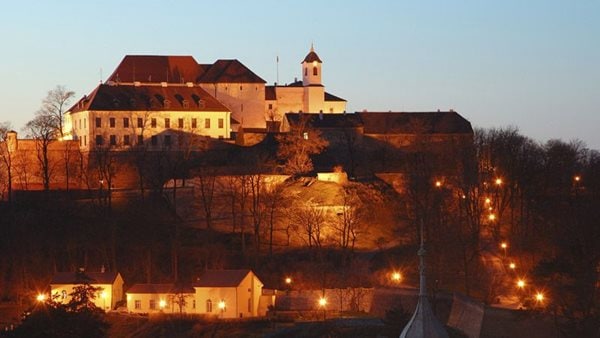
Removed from Unnamed collection
Spilberk Castle 
A prison shrouded in horrific legends, valuable historical collections, a beautiful view over the city and many cultural events held throughout the year – all of this is Špilberk Castle. One of the two most important dominant features of the Moravian capital and a place which became synonymous with the most horrific of dungeons throughout the whole of Europe is nowadays one of the most valuable monuments in Brno.
Špilberk’s importance and role changed fundamentally over the course of the centuries. This leading royal castle and seat of the Moravian margraves, gradually transformed into a monumental Baroque fortress, the toughest prison of the Austrian monarchy and later a military barracks. Nowadays it is home to Brno City Museum and one of the most important cultural centres in the city. http://www.czechtourism.com/c/spilberk-castle/
Map

Removed from Unnamed collection
Veveri Castle 
The castle was held in possession of various noblemen and its history is interwoven with a number of myths and legends. Today it is a venue of various cultural and social events. At the foot of the castle there is a steamboat stop. http://www.czechtourism.com/c/brno-veveri-castle/
Map
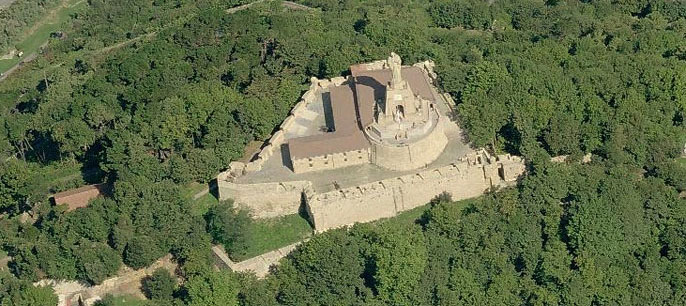
Removed from Unnamed collection
Castle of La Mota 
Monte Urgull is a natural area in the centre of San Sebastián that affords fabulous views of the sea and the city.
Witness to the wars suffered in their long history by the people of San Sebastián, a structure of ancient paths and fortifications can still be found on Monte Urgull today, including the splendid La Mota Castle.
In times of Sancho the Great, King of Navarre, the first defencive lookout point and San Sebastian's early walls were built. The date was around 1150. That first castle was a classic rock top construction, square, with a tower of each of the four corners and a keep to the rear. It was suffered numerous transformations over the years, just like the other fortifications on Monte Urgul. https://www.sansebastianturismo.com/en/to-do/culture-art-architecture/mansions-and-castles
Map
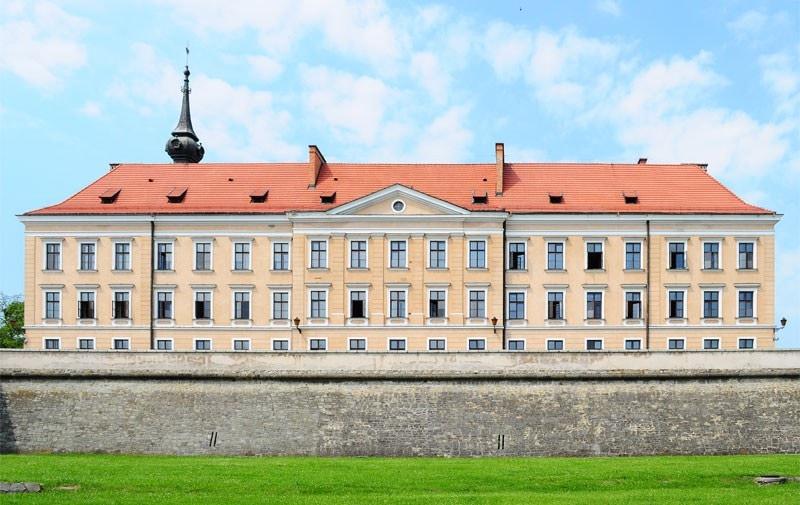
Removed from Unnamed collection
Rzeszow Castle 
The Rzeszów castle is undoubtedly one of the most interesting monuments of the city - not only because of its history, but also because of the fact that it is an interesting testimony to conservation thought from the turn of the 19th and 20th centuries, when its present form was created.
The castle was located south of the city, in the village of Staroniwa, at the end of an elongated loess headland surrounded on three sides by water obstacles: the Wisłok River and ponds or swamps. The intersection of this promontory with a moat substantially strengthened the defense of this place. In this area, during archaeological research, traces of prehistoric settlement (in the area of the northern curtain of the bastion fortifications) and late-medieval (on the southeast bastion) were found. At present, the hypothesis about the existence of a defensive court, mentioned in the document from 1447, regarding the division of property between Jan and Stanisław Rzeszowski is unlikely to be verified, but this hypothesis is very likely. http://www.rzeszow.pl/miasto-rzeszow/historia/zabytki-rzeszowa/zamek-w-rzeszowie
Map
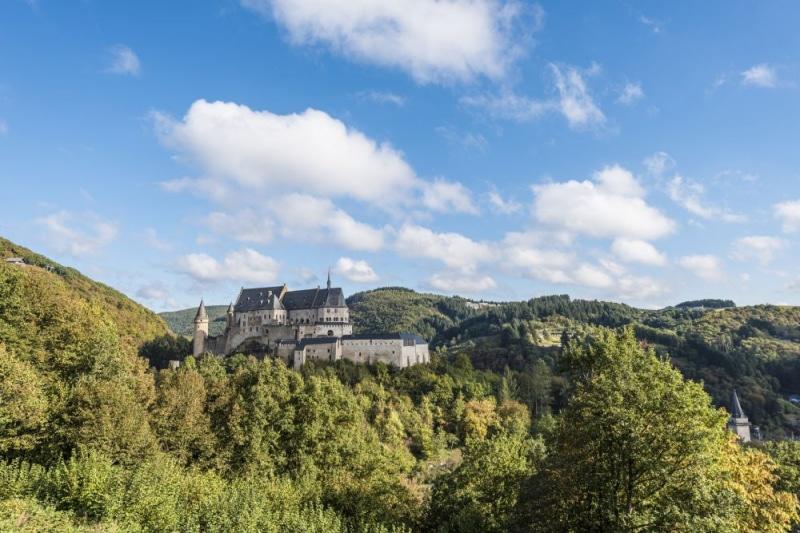
Removed from Unnamed collection
Castle of Vianden 
Vianden Castle was built between the 11th and 14th Century on the foundations of a Roman castle and a Carolingian refuge. This Castle-Palace bears the Hohenstaufen characteristics and is one of the largest and finest feudal residences of the Roman and Gothic eras in Europe.
Until the early 15th Century it was home to the powerful Counts of Vianden who could boast of their close connections to the German Imperial Court. The greatest of them, Count Henry I (1220 -1250) was even married to a member of the Capetian family, which ruled France at the time. In 1417, the castle and its lands were inherited by the younger line of the German House of Nassau, which -in 1530- also acquired the French principality of Orange. The castle's most remarkable rooms; the chapel as well as the small and the grand palaces were built in the late 12th and the first half of the 13th Century.
In 1890 the castle became the property of Grand Duke Adolphe of the elder line of Nassau and remained in the hands of the Grand Ducal family until 1977 when it was transferred into state ownership. It has been painstakingly restored to its former glory and today ranks among the most significant historical monuments of Europe. https://www.visitluxembourg.com/en/place/castle/vianden-castle
Map

Removed from Unnamed collection
Former Castle of the Counts of Luxembourg 
The name Luxembourg was first mentioned in 963 when count Siegfried exchanged lands for a small fortified castle by the name of Lucilinburhuc. Throughout the Middle Ages, the House of Luxembourg considerably extended its territory and power. Between 963 and 1443 Luxembourg was independent, at first as a County, then since 1354 as a Duchy. In the 14th Century and the first half of the 15th Century, four Holy Roman Emperors and four Kings of Bohemia came out of the House of Luxembourg.
Thanks to its strategic position in Europe and its formidable fortress - referred to as “Gibraltar of the North” - Luxembourg was much coveted. Thus -between 1443 and 1815- the castle of Siegfried had to endure a succession of Burgundian, Spanish, French and Austrian rulers who each shaped the fortress and the surrounding countryside.
After the defeat of Napoleon, the Powers of the time gathered at the Congress of Vienna in 1815 to reorganise Europe. Due to the importance of the fortress they decided to create a new country around the fortified castle on the Bock: the Grand Duchy of Luxembourg. https://www.visitluxembourg.com/en/place/castle/the-former-castle-of-the-counts-of-luxembourg
Map
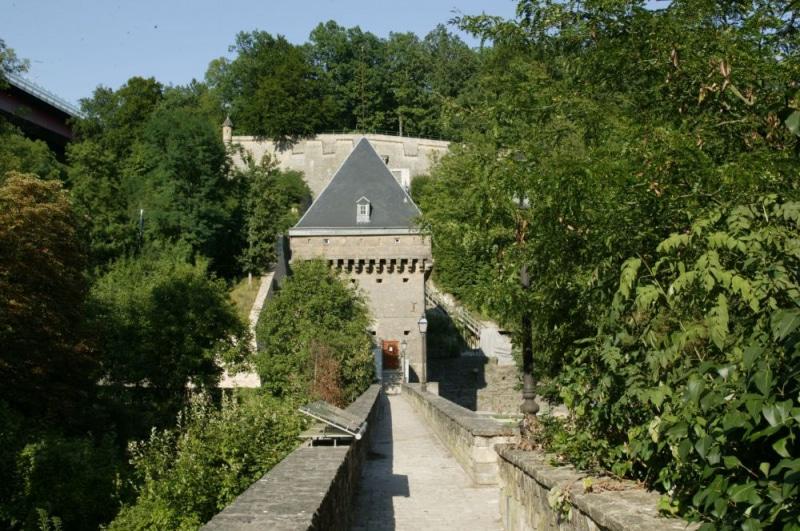
Removed from Unnamed collection
Circular walk "Vauban Luxembourg" 
The Vauban Circular Walk, named after the French fortress builder Sébastien le Prestre de Vauban (1633-1707), leads the visitor through one part of the fortifications of the 17th, 18th and 19th centuries. Guided visits for groups up to 25 people on request. Circular walk also accessible without guide. https://www.visitluxembourg.com/en/place/misc/circular-walk-vauban-luxembourg
Map
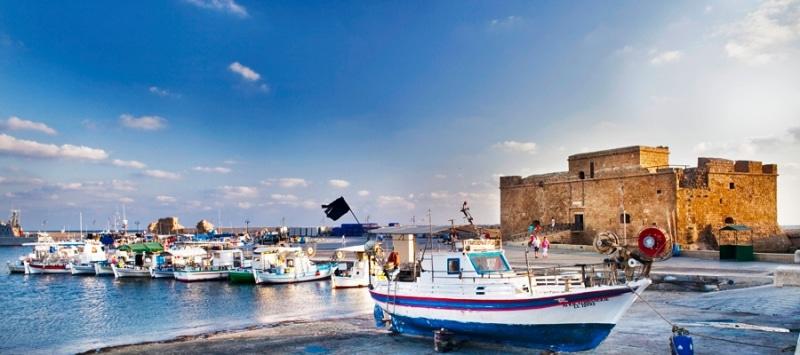
Removed from Unnamed collection
Paphos Castle 
Standing grandly at the west end of the town’s harbour, Pafos (Paphos) Castle (Medieval Fort) was originally a Byzantine fort built to protect the harbour, and was rebuilt by the Lusignans in the 13th century, but then dismantled by the Venetians. The Ottomans rebuilt it in the 16th century when they conquered the island. What survives today is the 1592 Ottoman restoration of the western Frankish tower with its Venetian additions. An inscription above the only entrance of the castle bears witness to this restoration.
The main part of the castle is a big square tower that has an enclosed courtyard in the middle. The ground floor consists of a central hall with small rooms on each of its two long sides, which were used as prison cells during Ottoman Rule. There are 12 battlements on the roof, which received a corresponding number of cannons. The Ottomans removed the cannons in 1878, when they handed over the administration of the island to the British, who used the castle as a salt store until 1935, when it was declared an Ancient Monument under the Antiquities Law. http://www.visitcyprus.com/index.php/en/discovercyprus/culture-religion/sites-monuments/item/245-pafos-paphos-castle
Map

Removed from Unnamed collection
Medieval Castle of Paphos 
As you eat or walk along the seafront, you will enjoy the view of the medieval castle that adorns the port of Pafos. Pafos Castle was originally a Byzantine fortress, built in 965 AD for the protection of the port. It was completely destroyed by an earthquake in 1222 AD. The castle was rebuilt by the Lusignans around the end of the 12th century to replace the fort of "Forty Columns" for the defence of the island, especially during the Medieval Period (1192-1489). It was destroyed shortly before 1570 by the Venetians, to stop it from being used by the Ottoman Turks, whose invasion of Cyprus was expected. The Turks did indeed invade the island and restored the castle in 1592. They even strengthened it with new fortifications as stated in a Turkish inscription above the entrance. The ground floor consists of a central hall which opened to several small spaces. Under Turkish rule, these were used as prisons.
Pafos (Paphos) Castle served as a fortress, as a prison and also as a salt storage area during the period in which the island was a British colony. In 1935 it was declared an ancient monument. https://www.cyprusalive.com/en/medieval-castle-of-paphos-pafos
Map
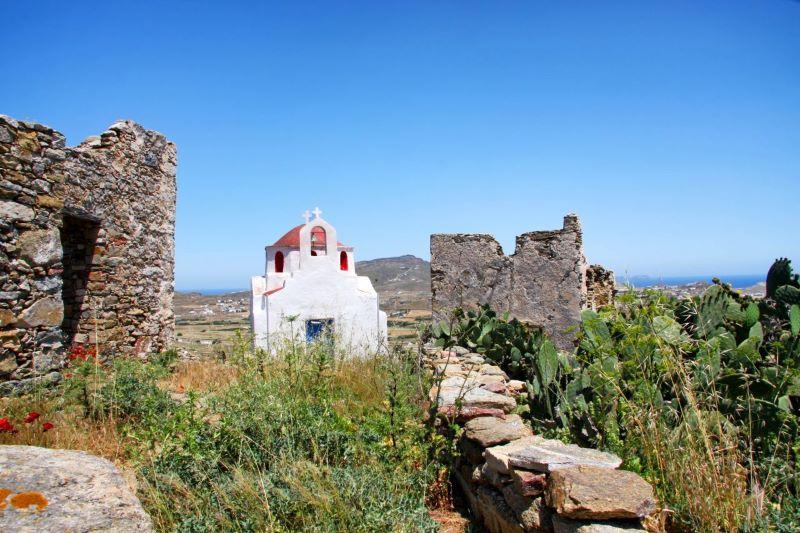
Removed from Unnamed collection
Gyzi Castle 
The Gyzi Castle of Mykonos Cyclades: The castle of Gyzi lies on a hill above the village of Ano Mera, in the center of Mykonos island. It dates from the 13th century and only some ruins of it remain today. It was built during the rule of the Gyzi family, a noble Venetian family that was ruling the Cyclades in the Medieval times, to protect the island from pirates and enemy attacks.
This area also hosts the ruins of the ancient city of Mykonos and you will find remains of a prehistoric market, an ancient cemetery and some ruins of an even older wall fortification. Near Gizi Castle, you will find the church of the Holy Saviour, dating from the 18th century. This hill gives an awesome view to the northern side of the island. https://www.greeka.com/cyclades/mykonos/sightseeing/gyzi-castle/
Map
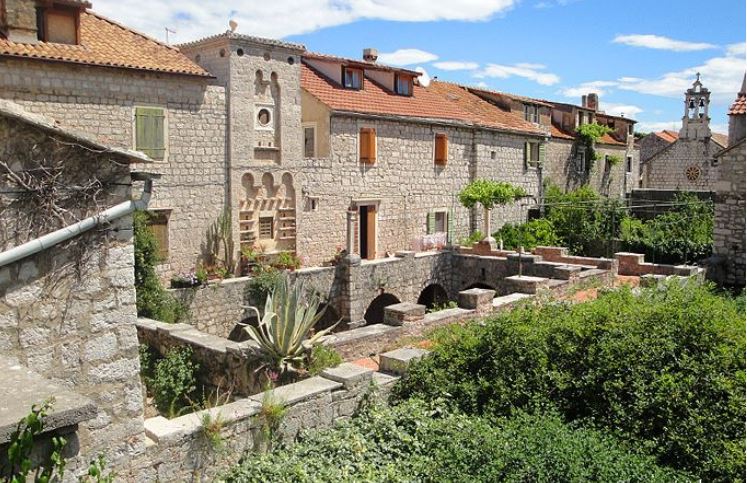
Removed from Unnamed collection
Tvrdalj 
Tvrdalj was built as a fort for defence from the Turks by the renowned poet from Hvar Petar Hektorović. It was erected by filling up the sea and one could enter it only over a bascule bridge. In the centre of Tvrdalj, Hektorović designed and built a Romanic park with a fishpond. Tvrdalj has numerous stone inscriptions, but the one saying 'Omnium Conditori' is the most significant one, since, with it, Hektorović dedicated his Tvrdalj to God, the Creator of everything. https://www.visit-hvar.com/tours/tvrdalj-stari-grad/HV-TR-24
Map
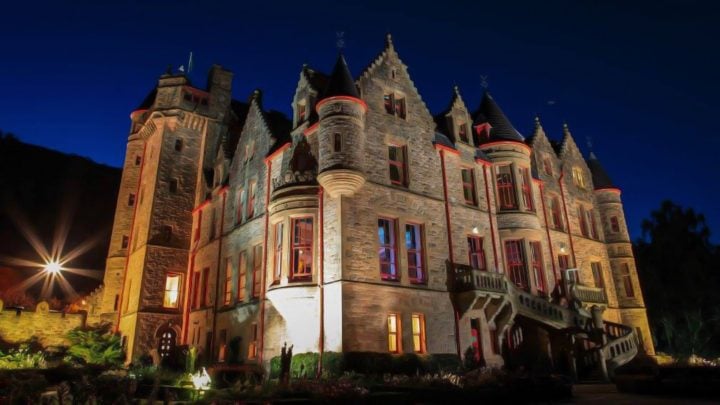
Removed from Unnamed collection
Belfast Castle Estate 
Belfast Castle is located in the Cave Hill area of north Belfast. It was built in the 1860s and is one of the city's most famous landmarks.
For generations, Cave Hill has been synonymous with Belfast, with its imposing outline visible throughout the city. The landmark, named for the five caves located on the side of the cliffs, contains a wealth of natural, archaeological and historical features, including Belfast Castle.
Its most famous feature, known locally as Napoleon's Nose, is believed to have been the inspiration for Jonathan Swift's novel, Gulliver's Travels.
The park is home to the Cave Hill Adventurous Playground, archaeological sites, Visitor Information Area in Belfast Castle, eco trails, walking and orienteering routes.
The estate contains landscaped gardens and mature mixed woodland and offers superb views of the city from a variety of vantage points. It is home to many different species of wildlife, including long-eared owls, sparrowhawks and Belfast's rarest plant; the town hall clock. https://visitbelfast.com/partners/belfast-castle-estate-cave-hill-visitor-centre/
Map

Removed from Unnamed collection
Castle of the Counts 
A weekend trip to Ghent is simply not complete without a visit to the mysterious ‘Castle of the Counts’. This important sight in Ghent is a castle with a very turbulent past, closely intertwined with the complex—often stormy—political and social history of the city. It is the only remaining mediaeval castle with a moat and largely intact defence system in Flanders. Your visit to the Castle of the Counts will give you a complete picture of heraldic culture in the 12th century. The gatehouse, ramparts, keep, count’s residence and stables are open to visitors.
The Castle of the Counts boasts a unique collection of torture equipment. What used to be the pantry now features the torture equipment, which is displayed in a suggestive executioner's cabinet. The former courtroom features the collection of judicial objects. The Castle of the Counts also hosts all kinds of cultural activities, events and activities, for example during the Ghent Festivities. It is also a popular place to get married for Ghent’s locals.
Let’s not forget the time the Castle of the Counts was occupied by protesting students in 1949! Explore the castle during your weekend trip in Ghent and find out all about the ‘Battle of the Castle of the Counts’. https://visit.gent.be/en/castle-counts-0?from_category=3332&context=tourist
Map

Removed from Unnamed collection
The Castle of Ravadinovo 
From the first glance, the Castle is made in the style of the classic Western European castles combining various styles from the Renaissance and Romantic periods – but this comes not to be true! The style of the Castle is one and only – the unique Fairy style. This is the secret of its magic impact – the dream that came true to make a castle existing only in fairy-tales. https://www.gotoburgas.com/en/places-to-go/view/507
Map

Removed from Unnamed collection
The Trazegnies Castle 
Trazegnies was the seat of a powerful seigniory and the cradle of one of the most illustrious families in Europe. Trazegnies' family possessed a castle worthy of her. Over the centuries, the castle has undergone a great many transformations. The splendid main building is a jewel in Belgium’s crown and is almost unique in the country, displaying architecture in the style of Louis XIII. The Romanesque cellars still survive today from the primitive manor, a rare testimony of the 11th century.
Today, part of the castle is available for hire for different events: seminars, buffets and much more. https://www.paysdecharleroi.be/index.php?option=com_flexicontent&view=items&cid=371:centre-de-conferences-congres-seminaires&id=985069:ch%C3%A2teau-de-trazegnies&Itemid=1251&lang=en
Map

Removed from Unnamed collection
Braemar Castle 
A forbidding exterior conceals 12 authentic rooms charmingly furnished as though the family has just stepped out. Dig deeper and discover a turbulent past which echoes the story of Scotland over the past 400 years.
Built in 1628 by the Earl of Mar as his Highland Hunting Lodge, set alight by the notorious Black Colonel in 1689, used as a garrison for Hanoverian soldiers after the rebel Jacobite defeat at the Battle of Culloden and for the past 200 years, home to the Chiefs of Clan Farquharson. Now lovingly tended by the community of Braemar and gradually being restored to its full splendour. https://www.visitabdn.com/what-to-do/castles/famous-castles/view/braemar-castle
Map
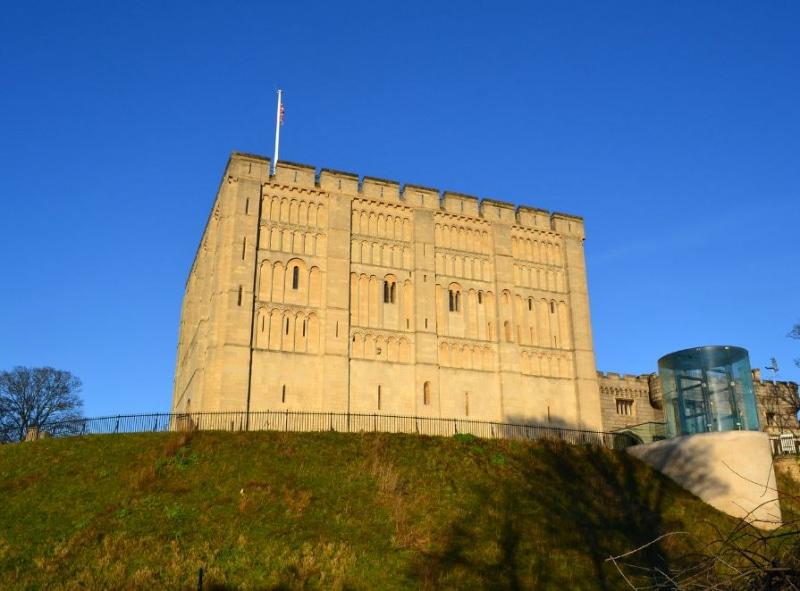
Removed from Unnamed collection
Norwich Castle 
Featuring never-before-seen archives and artefacts from Norwich Castle’s 900-year history, including a wealth of new research uncovered by the Norwich Castle: Gateway to Medieval England project to transform the Keep, the exhibition shows this majestic landmark in a fascinating new light.
Standing atop the largest man-made mound in the country, Norwich Castle has dominated the City’s skyline ever since the 12th century; but what is the story of Norwich’s iconic and much-loved square box on the hill? Built as a royal palace, Norwich Castle was a Norman showpiece with lavishly-decorated interiors fit for a king. By the 14th century, it had become the County Gaol confining Norfolk’s prisoners within its walls. With the opening of the new prison at the end of the 19th century, the Castle’s fate was uncertain, until its conversion into a public museum, which it remains to this day.
The Square Box on the Hill illustrates this rich history through a stunning mixture of prints, models, paintings, architectural plans and memorabilia, many of which have never been on display before. Supported by headline sponsors Brown&Co, the exhibition also showcases the latest exciting plans for the Castle’s future as part of the Norwich Castle: Gateway to Medieval England project, supported by the Heritage Lottery Fund. https://www.visitnorfolk.co.uk/inspire/norwich-castle-exhibition.aspx
Map
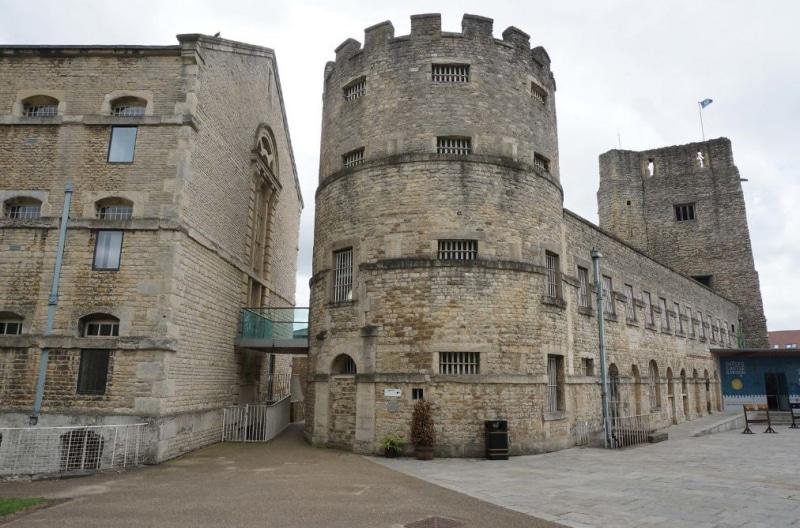
Removed from Unnamed collection
Oxford Castle & Prison 
Come and explore the 1,000-year history of Oxford Castle and Prison. Step back in time with our costumed guided tours and see fascinating stories come to life. Hear the great tales of Empress Matilda or the fate of Mary Blandy, one of the prisons’ most famous criminals. Step inside our padded jail cell and meet the notorious ‘Black Panther’, a vicious prisoner held here in the 1970s.
Find gorgeous views atop of St. George’s Tower and then descend into the atmospheric crypt of St Georges Chapel. Here you can touch the stones were Oxford University was rumoured to begin and stand in the birthplace of King Arthur. Explore the austere confines of the prisons’ D-Wing and debtors tower, here you can wander the cells and learn about our youngest inmates.
After your guided tour, you can climb the mound, the remains of a motte and bailey castle. Explore the attraction at your own leisure and dress up like a prisoner in our exhibition space. Sit down with a nice cup of coffee in our café, spread out your map and plan where to go next in Oxford.
In the summer, we have Knight School, a medieval-inspired workshop which trains children into becoming little warriors. Our Shakespeare Festival is an Oxford summer staple whilst Ghost Fest is sure to give you a scare over Halloween. https://www.experienceoxfordshire.org/venue/oxford-castle-and-prison/
Map
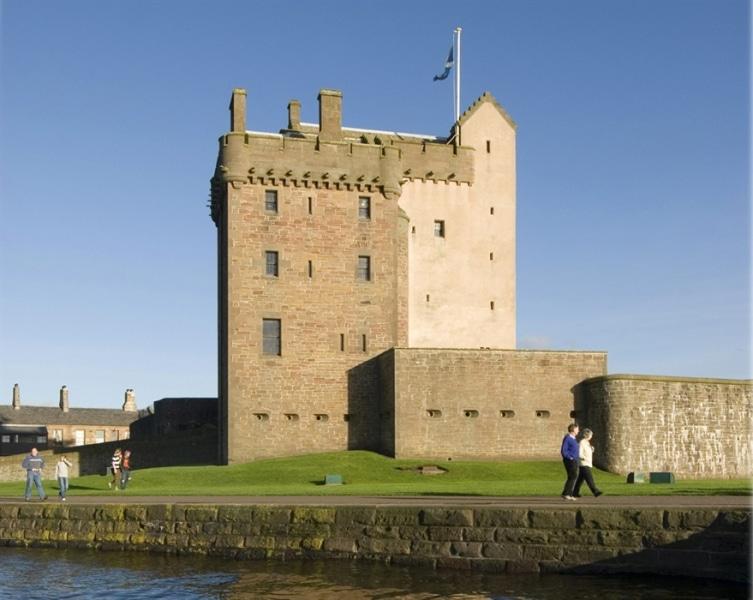
Removed from Unnamed collection
Broughty Castle Museum 
Discover the people, environment, history and wildlife of Broughty Ferry in this amazing 15th-century coastal fort, which houses a fascinating museum. Enjoy stunning views of Broughty Beach and the Tay estuary. Entry is free.
This 15th-century coastal fort has faced many battles and sieges and was rebuilt in the 19th century as part of the River Tay's coastal defence system.
It now houses a fascinating museum featuring displays on the life and times of Broughty Ferry, its people, the environment and the wildlife that lives close by. In 2019, the Castle celebrates its 50th anniversary as a museum!
Don't miss the Orchar Gallery, featuring a selection of paintings from the amazing Orchar Collection. Enjoy the spectacular views over the River Tay from the observation post. You may even be able to spot a dolphin or two. https://www.visitscotland.com/info/see-do/broughty-castle-museum-p245761
Map
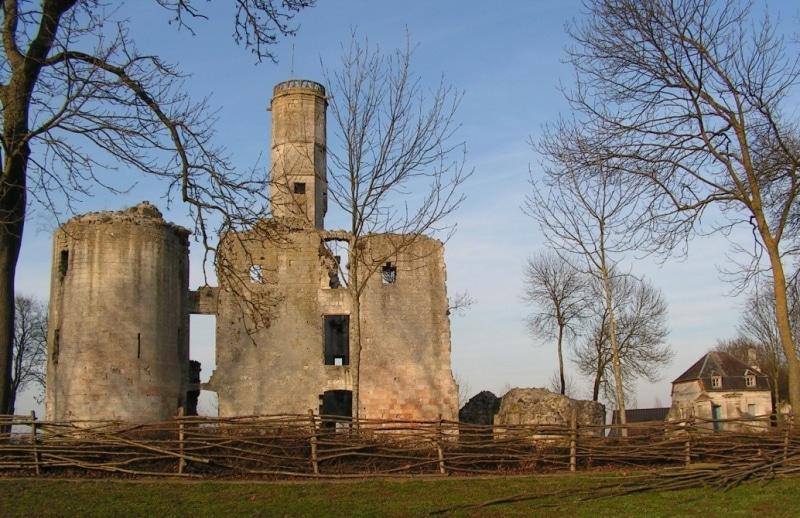
Removed from Unnamed collection
Site of Folleville 
Remains of a medieval castle and church, with UNESCO World Heritage status due to their connection with the Santiago de Compostella pilgrim way. The church houses the striking tombs of the Lords of Folleville in Carrara marble, an example of the Italian Renaissance having spread as far as Picardy. Below the castle is a village where traces of its past and its setting are reconstituted. http://www.visit-amiens.com/tourinsoft/details/en_patrimoineculturel/PCUPIC0800010630/PCU
Map

Removed from Unnamed collection
Picquigny Castle 
Take a fresh look at history in the ruined castle of Picquigny. All year round escape game rooms in total historical immersion help you understand fragments of the history of this castle. In summer Picquigny castle is open to the public in the afternoon. Use our well written, illustrated guide to exploring the many facets of this site at your own pace. Treasure hunt for youngsters. In summer there are unusual torchlight tours on Friday evenings or at other times for groups (book ahead). School groups and school holiday leisure centre groups are welcome from April to August for a full or half-day - group workshops (heraldry, illumination, calligraphy, treasure hunt). escape game or torchlight tour. Team building and other private events can be organised with medieval meal and activities and/or escape game. Standing high above the Somme valley for many centuries, the ruins of Picquigny castle are both imposing and picturesque. Climb up to the barbican gate, once a drawbridge, to get a real idea of the castle's past greatness. The tall imposing façade of the main building is truly striking. Then walk along the fortifications to the Gard gateway, the Renaissance style Sévigné wing and the collegiate church open in summer. The Sévigné wing was so named in honour of Madame de Sévigné, a famous woman of letters, who stayed for four days in Picquigny castle in April 1689. When writing to her daughter, Mme de Sévigné compared the castle to that of Grignan and mentioned the river Somme. "After dinner, we arrived here at a mansion that displayed all the pride of the heiress of Pecquigni. It is an old house built on an eminence above the town, like Grignan; a fine chapter, as at Grignan, a dean and twelve canons: I know not whether the foundations be as handsome but there are terraces on the borders of the river Somme which winds in a thousand meanders through the fields, which indeed are not to be found at Grignan. http://www.visit-amiens.com/tourinsoft/details/en_patrimoineculturel/PCUPIC0800010651/PCU
Map
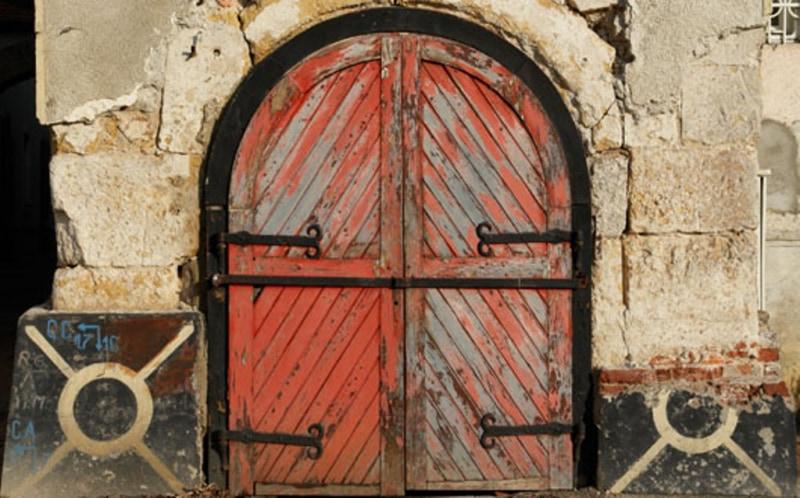
Removed from Unnamed collection
Iancu de Hunedoara House 
Iancu de Hunedoara House was built in 1446, it is part of the old medieval castle built by Iancu for his wife Elisabeta. https://www.baiamare.ro/ro/Descopera-Baia-Mare/Obiective-turistice-si-atractii/Atractii-turistice/Casa-Iancu-de-Hunedoara/
Map

















